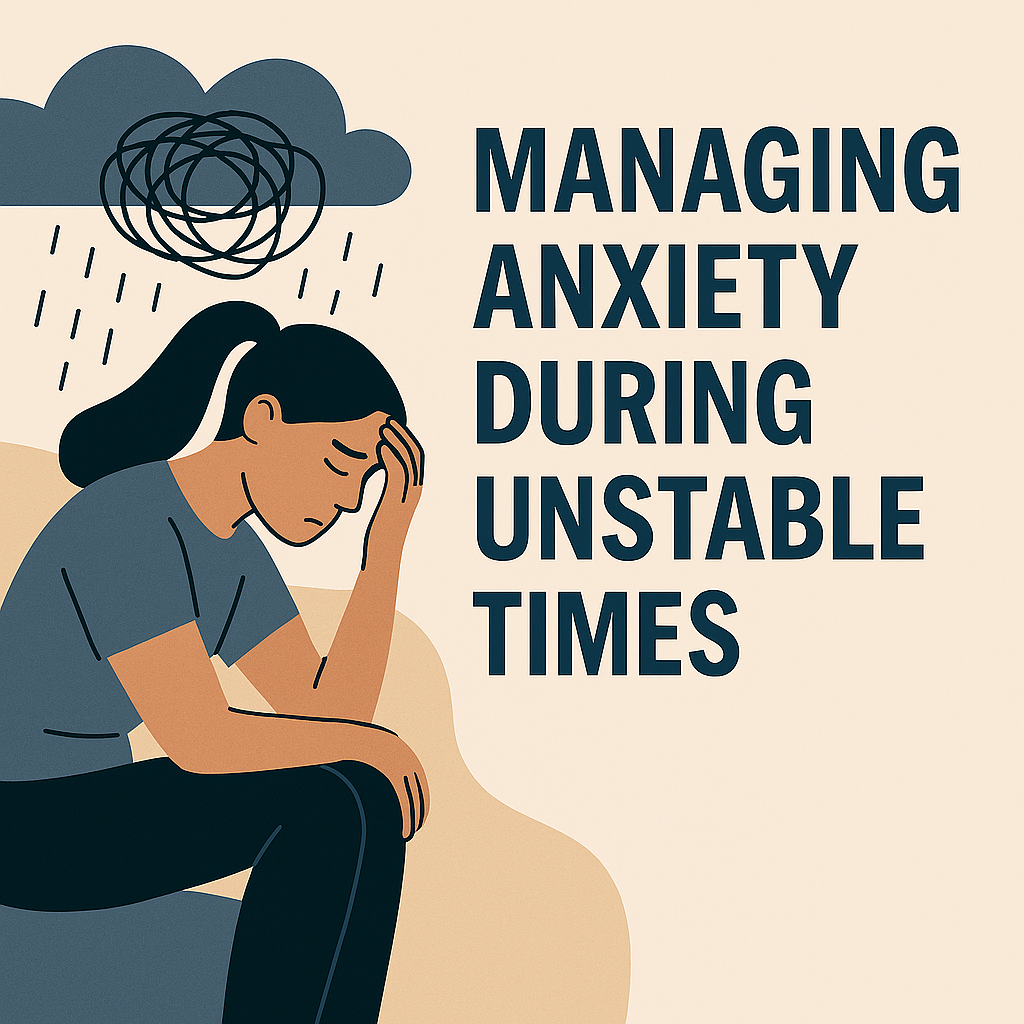Blog
Great leaders don’t just manage tasks—they build people up. Christine Caine’s leadership advice reminds us that believing in others is one of the most powerful things we can do. When leaders believe in people, they help unlock potential that might otherwise stay hidden. It’s not about perfection—it’s about possibility. Believing the best of others means choosing trust over suspicion. Instead of assuming someone will fail, assume they’ll rise. This mindset creates a culture of encouragement, not fear. People work harder when they know their leader sees their strengths and believes they can grow. Leadership isn’t about being the smartest person in the room. It’s about helping others shine. That starts with listening, showing respect, and giving people room to learn. Mistakes will happen—but leaders who believe in their team use those moments to teach, not tear down. Christine Caine’s approach is simple but powerful: speak life, not doubt. Expect excellence, but lead with grace. When leaders believe in people and believe the best of them, they build teams that are confident, creative, and committed. In the end, leadership is less about control and more about trust. And trust begins with belief in people. Want a quick visual summary? Check out Better Leadership Starts with Belief , for a clear, inspiring breakdown you can share with your team.

Based on insights from James Hewitt's "Regenerative Performance" Something's not adding up in today's workplace. While companies demand more from their teams, the results tell a concerning story. Research shows that 50% of employees now show clear signs of burnout, and an alarming 73% feel disconnected from their work. James Hewitt, performance expert and author of "Regenerative Performance," points to a critical mismatch. We're asking people to perform at peak levels without giving them what they need to recover and recharge. Think of it like a smartphone. You can't expect your phone to run at full power all day without plugging it in. Yet that's exactly what we're doing to our workforce. We pile on meetings, deadlines, and pressure while cutting back on the very things that restore energy: breaks, development time, and meaningful connection. The solution isn't working less—it's working smarter. Hewitt's research reveals that sustainable high performance comes from balancing intense effort with intentional recovery. Teams that build in time to recharge actually outperform those that push through exhaustion. Smart leaders are already making the shift. They're protecting their people's energy as carefully as they manage their budgets. Because burned-out employees don't just hurt themselves—they hurt the bottom line too. Want to dive deeper into this issue? View The Burnout Crisis to understand the full scope of this workplace challenge. "Sustainable high performance comes from the rhythm of oscillation—not from the intensity of effort alone." —James Hewitt

Your manager might be the key to your company's bottom line. Gallup's extensive research shows that quality managers don't just make employees happier—they directly boost financial results. The Numbers Don't Lie Gallup studied thousands of business units and found striking patterns. Teams with engaged managers see 23% higher profitability compared to those with disengaged leaders. The research also reveals that companies in the top quartile for employee engagement achieve 10% higher customer ratings and 18% higher productivity. What Makes the Difference? Great managers create a ripple effect throughout their teams: · Boost employee engagement - Engaged workers are 31% more productive and have 37% better sales performance · Reduce turnover costs - Good managers cut voluntary turnover by up to 40% · Improve customer satisfaction - Teams with strong leadership see 12% better customer metrics · Drive innovation - Engaged employees are 3x more likely to contribute new ideas The research is clear: investing in manager development isn't just good for morale—it's essential for financial success. Companies that prioritize manager training see measurable improvements in revenue, profit margins, and overall business performance. Check out our visual breakdown to see all the numbers in action. Ready to transform your bottom line? Schedule a 15-minute meeting with Cathie Leimbach to share your hopes and explore how Agon Leadership might be able to assist you in upskilling your managers so they are equipped to help today's employees excel.

Every workplace has its challenges. Some common behaviors create frustration for both leaders and team members. When these patterns show up, they can lower morale and productivity: Showing up late for meetings or shifts Calling in sick often Missing deadlines or forgetting important details Avoiding teamwork or refusing to help others Complaining without offering possible solutions Ignoring feedback or repeating the same mistakes These behaviors can drain energy from the team. Yet, here’s the good news: people tend to show up differently when they feel valued and appreciated. When employees know their efforts matter, they’re more reliable, more engaged, and more willing to go the extra mile. Creating a culture of appreciation isn’t complicated—it starts with small, intentional actions. Leaders who show genuine care for their employees as people see better teamwork, stronger morale, and improved results for the organization. Want to learn how? Join us for a 30-minute webinar on Strengthening Your Culture - by Showing Appreciation in the Workplace on Monday, September 22, at 12:30 pm Eastern . You’ll leave with at least one simple action that will increase your employees’ willingness to contribute more at work.

The past five years have brought many big changes. From world events to personal challenges, life feels less predictable than ever. This constant uncertainty affects our emotions and mental health both at home and at work. When everything feels unstable, it's normal to feel confused and frustrated. Sometimes we react in ways that don't help. Anxiety happens when we worry about what might go wrong in the future. Our minds race with "what if" thoughts, affecting us both physically and mentally. The good news is we can build emotional resilience to handle these tough times better. Here's how to start: Focus on what you can control: When something specific is making you worry, figure out what steps you can take to reduce negative outcomes. If you're stressed about being late to a meeting, set a reminder on your phone to leave with enough time to arrive 15 minutes early. If you're concerned about finishing a work project on time, schedule dedicated time on your calendar to work on it. If you realize you can't finish it alone, ask your boss if you can have more time or see if a coworker can help out. Take positive action: Instead of worrying about problems, do something small to make your situation better. Clean your workspace, call someone you care about, or take a short walk outside. Build stronger relationships: Reach out to family, friends, or coworkers. Have lunch together, share your worries with someone you trust, or simply check in on others. These connections help us feel less alone during hard times. When we work together and support each other, we can step back from fear and worry about situations we can't control. Remember, we can't control everything that happens, but we can control how we respond.

In today’s fast-paced world, it’s easy to get caught up in schedules, screens, and endless to-do lists. But what people really crave is something deeper—true human connection. Dr. Paul White, who studies workplace relationships, reminds us that appreciation and connection are not just “nice to have”—they are essential for our well-being. And researcher Brené Brown shows that real connection comes from vulnerability, where people feel safe, seen and valued. Without this kind of connection, many struggle with loneliness, anxiety, or even depression. On the other hand, when we feel truly connected, we’re happier, more engaged, more resilient, and more productive. So how can we build better connections? Start small. Proactively reach out for a live conversation instead of only sending a quick text or email. Take time to connect with peers at work or in your community. Ask others to share something personal about themselves, and share something personal about your life. These simple actions can create moments of trust and belonging. And in a world that can sometimes feel disconnected, these moments are not just valuable—they are vital. Join Us! We invite you to explore this topic further at our upcoming virtual event: Managing Performance in Today’s Workforce. Learn practical strategies to strengthen workplace connection and performance. View event details here.

What separates thriving companies from struggling ones? 🤔 Professor Lynda Gratton from London Business School spent decades studying this exact question. Her findings will change how you think about leadership. Here's what she discovered: Organizations that invest in developing collaborative leaders consistently outperform their competitors. Not by a little—by a lot. Through her groundbreaking study of 21 global companies and 200+ executives, Gratton identified the three game-changing elements: ✅ Cooperative culture - Moving from "me vs. you" to "we together" ✅ Rich networks - Breaking down silos so ideas flow freely ✅ Shared purpose - Giving work meaning beyond the paycheck The results speak for themselves: → Better innovation → Higher employee engagement → Stronger financial performance Companies that train managers to be collaborative leaders (not just bosses) create environments where teams actually want to work together. My takeaway? Leadership development isn't a "nice to have"—it's your competitive advantage. When leaders learn to cooperate and inspire others, entire organizations transform. What's your experience with collaborative leadership? Have you seen this play out in your organization? Want to dive deeper? View Three Pillars of Success which breaks down how to produce measurable results in innovation, efficiency, and engagement.

In leadership, hope may spark positivity—but trust is what sustains it. Trust means your team believes you’re honest, reliable, and truly have their best interests in mind. Without it, people hesitate to share ideas, take risks, or fully engage. Great leaders build trust through consistent actions. They follow through on promises, admit mistakes, and lead with transparency. They listen without judgment, treat everyone with respect, and make decisions that are fair and thoughtful. When leaders communicate clearly and regularly—even when the news is tough—they create a culture of openness. When they give credit generously and support their team both publicly and privately, trust grows even deeper. Over time, trust becomes the foundation for loyalty, collaboration, and high performance. People feel safer, more motivated, and more willing to contribute at their best. Trust doesn’t happen overnight. But with patience, consistency, and care, leaders can build it—and with it, a stronger, more positive workplace.

Leadership isn't just about solving problems—it's about fostering a culture of hope. Hope is a powerful force that can transform workplaces, especially during challenging times. When leaders embody hope, they inspire their teams to believe in a brighter future and persevere through adversity. A hopeful leader sees beyond obstacles and focuses on opportunities. They set clear goals, celebrate small victories, and maintain a positive outlook even in the face of uncertainty. By nurturing hope, they empower their team to stay motivated and resilient. Imagine a workplace where every challenge is met with optimism and every setback is seen as a learning opportunity. That's the environment a hopeful leader cultivates—one where individuals feel supported, valued, and capable of achieving great things together. Let's embrace hope as a cornerstone of leadership. Together, we can create workplaces where positivity thrives, challenges are conquered, and success is a shared journey.
Great leaders don’t just manage tasks—they build people up. Christine Caine’s leadership advice reminds us that believing in others is one of the most powerful things we can do. When leaders believe in people, they help unlock potential that might otherwise stay hidden. It’s not about perfection—it’s about possibility. Believing the best of others means choosing trust over suspicion. Instead of assuming someone will fail, assume they’ll rise. This mindset creates a culture of encouragement, not fear. People work harder when they know their leader sees their strengths and believes they can grow. Leadership isn’t about being the smartest person in the room. It’s about helping others shine. That starts with listening, showing respect, and giving people room to learn. Mistakes will happen—but leaders who believe in their team use those moments to teach, not tear down. Christine Caine’s approach is simple but powerful: speak life, not doubt. Expect excellence, but lead with grace. When leaders believe in people and believe the best of them, they build teams that are confident, creative, and committed. In the end, leadership is less about control and more about trust. And trust begins with belief in people. Want a quick visual summary? Check out Better Leadership Starts with Belief , for a clear, inspiring breakdown you can share with your team.

Based on insights from James Hewitt's "Regenerative Performance" Something's not adding up in today's workplace. While companies demand more from their teams, the results tell a concerning story. Research shows that 50% of employees now show clear signs of burnout, and an alarming 73% feel disconnected from their work. James Hewitt, performance expert and author of "Regenerative Performance," points to a critical mismatch. We're asking people to perform at peak levels without giving them what they need to recover and recharge. Think of it like a smartphone. You can't expect your phone to run at full power all day without plugging it in. Yet that's exactly what we're doing to our workforce. We pile on meetings, deadlines, and pressure while cutting back on the very things that restore energy: breaks, development time, and meaningful connection. The solution isn't working less—it's working smarter. Hewitt's research reveals that sustainable high performance comes from balancing intense effort with intentional recovery. Teams that build in time to recharge actually outperform those that push through exhaustion. Smart leaders are already making the shift. They're protecting their people's energy as carefully as they manage their budgets. Because burned-out employees don't just hurt themselves—they hurt the bottom line too. Want to dive deeper into this issue? View The Burnout Crisis to understand the full scope of this workplace challenge. "Sustainable high performance comes from the rhythm of oscillation—not from the intensity of effort alone." —James Hewitt

Your manager might be the key to your company's bottom line. Gallup's extensive research shows that quality managers don't just make employees happier—they directly boost financial results. The Numbers Don't Lie Gallup studied thousands of business units and found striking patterns. Teams with engaged managers see 23% higher profitability compared to those with disengaged leaders. The research also reveals that companies in the top quartile for employee engagement achieve 10% higher customer ratings and 18% higher productivity. What Makes the Difference? Great managers create a ripple effect throughout their teams: · Boost employee engagement - Engaged workers are 31% more productive and have 37% better sales performance · Reduce turnover costs - Good managers cut voluntary turnover by up to 40% · Improve customer satisfaction - Teams with strong leadership see 12% better customer metrics · Drive innovation - Engaged employees are 3x more likely to contribute new ideas The research is clear: investing in manager development isn't just good for morale—it's essential for financial success. Companies that prioritize manager training see measurable improvements in revenue, profit margins, and overall business performance. Check out our visual breakdown to see all the numbers in action. Ready to transform your bottom line? Schedule a 15-minute meeting with Cathie Leimbach to share your hopes and explore how Agon Leadership might be able to assist you in upskilling your managers so they are equipped to help today's employees excel.

Every workplace has its challenges. Some common behaviors create frustration for both leaders and team members. When these patterns show up, they can lower morale and productivity: Showing up late for meetings or shifts Calling in sick often Missing deadlines or forgetting important details Avoiding teamwork or refusing to help others Complaining without offering possible solutions Ignoring feedback or repeating the same mistakes These behaviors can drain energy from the team. Yet, here’s the good news: people tend to show up differently when they feel valued and appreciated. When employees know their efforts matter, they’re more reliable, more engaged, and more willing to go the extra mile. Creating a culture of appreciation isn’t complicated—it starts with small, intentional actions. Leaders who show genuine care for their employees as people see better teamwork, stronger morale, and improved results for the organization. Want to learn how? Join us for a 30-minute webinar on Strengthening Your Culture - by Showing Appreciation in the Workplace on Monday, September 22, at 12:30 pm Eastern . You’ll leave with at least one simple action that will increase your employees’ willingness to contribute more at work.

The past five years have brought many big changes. From world events to personal challenges, life feels less predictable than ever. This constant uncertainty affects our emotions and mental health both at home and at work. When everything feels unstable, it's normal to feel confused and frustrated. Sometimes we react in ways that don't help. Anxiety happens when we worry about what might go wrong in the future. Our minds race with "what if" thoughts, affecting us both physically and mentally. The good news is we can build emotional resilience to handle these tough times better. Here's how to start: Focus on what you can control: When something specific is making you worry, figure out what steps you can take to reduce negative outcomes. If you're stressed about being late to a meeting, set a reminder on your phone to leave with enough time to arrive 15 minutes early. If you're concerned about finishing a work project on time, schedule dedicated time on your calendar to work on it. If you realize you can't finish it alone, ask your boss if you can have more time or see if a coworker can help out. Take positive action: Instead of worrying about problems, do something small to make your situation better. Clean your workspace, call someone you care about, or take a short walk outside. Build stronger relationships: Reach out to family, friends, or coworkers. Have lunch together, share your worries with someone you trust, or simply check in on others. These connections help us feel less alone during hard times. When we work together and support each other, we can step back from fear and worry about situations we can't control. Remember, we can't control everything that happens, but we can control how we respond.

In today’s fast-paced world, it’s easy to get caught up in schedules, screens, and endless to-do lists. But what people really crave is something deeper—true human connection. Dr. Paul White, who studies workplace relationships, reminds us that appreciation and connection are not just “nice to have”—they are essential for our well-being. And researcher Brené Brown shows that real connection comes from vulnerability, where people feel safe, seen and valued. Without this kind of connection, many struggle with loneliness, anxiety, or even depression. On the other hand, when we feel truly connected, we’re happier, more engaged, more resilient, and more productive. So how can we build better connections? Start small. Proactively reach out for a live conversation instead of only sending a quick text or email. Take time to connect with peers at work or in your community. Ask others to share something personal about themselves, and share something personal about your life. These simple actions can create moments of trust and belonging. And in a world that can sometimes feel disconnected, these moments are not just valuable—they are vital. Join Us! We invite you to explore this topic further at our upcoming virtual event: Managing Performance in Today’s Workforce. Learn practical strategies to strengthen workplace connection and performance. View event details here.

What separates thriving companies from struggling ones? 🤔 Professor Lynda Gratton from London Business School spent decades studying this exact question. Her findings will change how you think about leadership. Here's what she discovered: Organizations that invest in developing collaborative leaders consistently outperform their competitors. Not by a little—by a lot. Through her groundbreaking study of 21 global companies and 200+ executives, Gratton identified the three game-changing elements: ✅ Cooperative culture - Moving from "me vs. you" to "we together" ✅ Rich networks - Breaking down silos so ideas flow freely ✅ Shared purpose - Giving work meaning beyond the paycheck The results speak for themselves: → Better innovation → Higher employee engagement → Stronger financial performance Companies that train managers to be collaborative leaders (not just bosses) create environments where teams actually want to work together. My takeaway? Leadership development isn't a "nice to have"—it's your competitive advantage. When leaders learn to cooperate and inspire others, entire organizations transform. What's your experience with collaborative leadership? Have you seen this play out in your organization? Want to dive deeper? View Three Pillars of Success which breaks down how to produce measurable results in innovation, efficiency, and engagement.

In leadership, hope may spark positivity—but trust is what sustains it. Trust means your team believes you’re honest, reliable, and truly have their best interests in mind. Without it, people hesitate to share ideas, take risks, or fully engage. Great leaders build trust through consistent actions. They follow through on promises, admit mistakes, and lead with transparency. They listen without judgment, treat everyone with respect, and make decisions that are fair and thoughtful. When leaders communicate clearly and regularly—even when the news is tough—they create a culture of openness. When they give credit generously and support their team both publicly and privately, trust grows even deeper. Over time, trust becomes the foundation for loyalty, collaboration, and high performance. People feel safer, more motivated, and more willing to contribute at their best. Trust doesn’t happen overnight. But with patience, consistency, and care, leaders can build it—and with it, a stronger, more positive workplace.

Leadership isn't just about solving problems—it's about fostering a culture of hope. Hope is a powerful force that can transform workplaces, especially during challenging times. When leaders embody hope, they inspire their teams to believe in a brighter future and persevere through adversity. A hopeful leader sees beyond obstacles and focuses on opportunities. They set clear goals, celebrate small victories, and maintain a positive outlook even in the face of uncertainty. By nurturing hope, they empower their team to stay motivated and resilient. Imagine a workplace where every challenge is met with optimism and every setback is seen as a learning opportunity. That's the environment a hopeful leader cultivates—one where individuals feel supported, valued, and capable of achieving great things together. Let's embrace hope as a cornerstone of leadership. Together, we can create workplaces where positivity thrives, challenges are conquered, and success is a shared journey.

